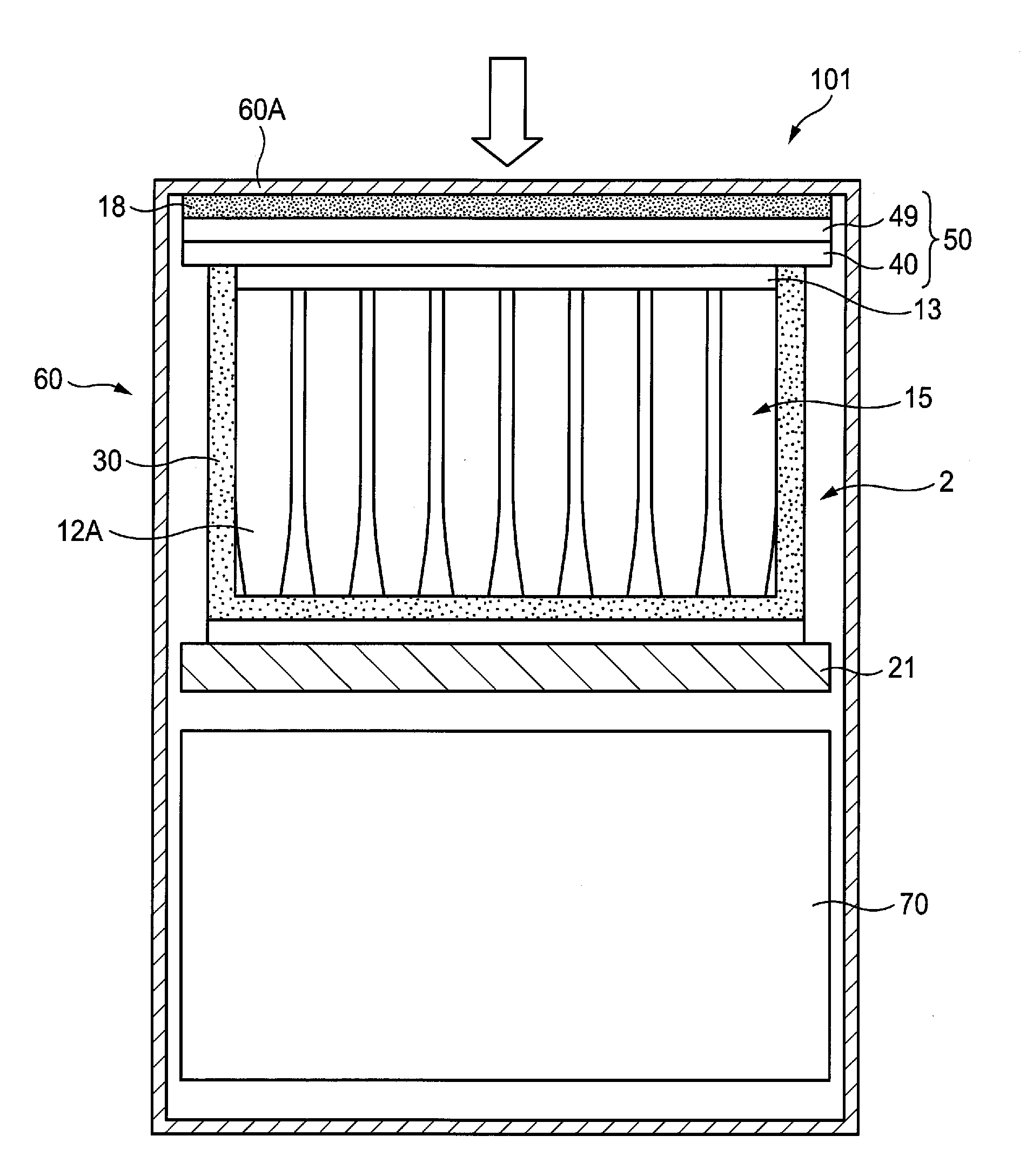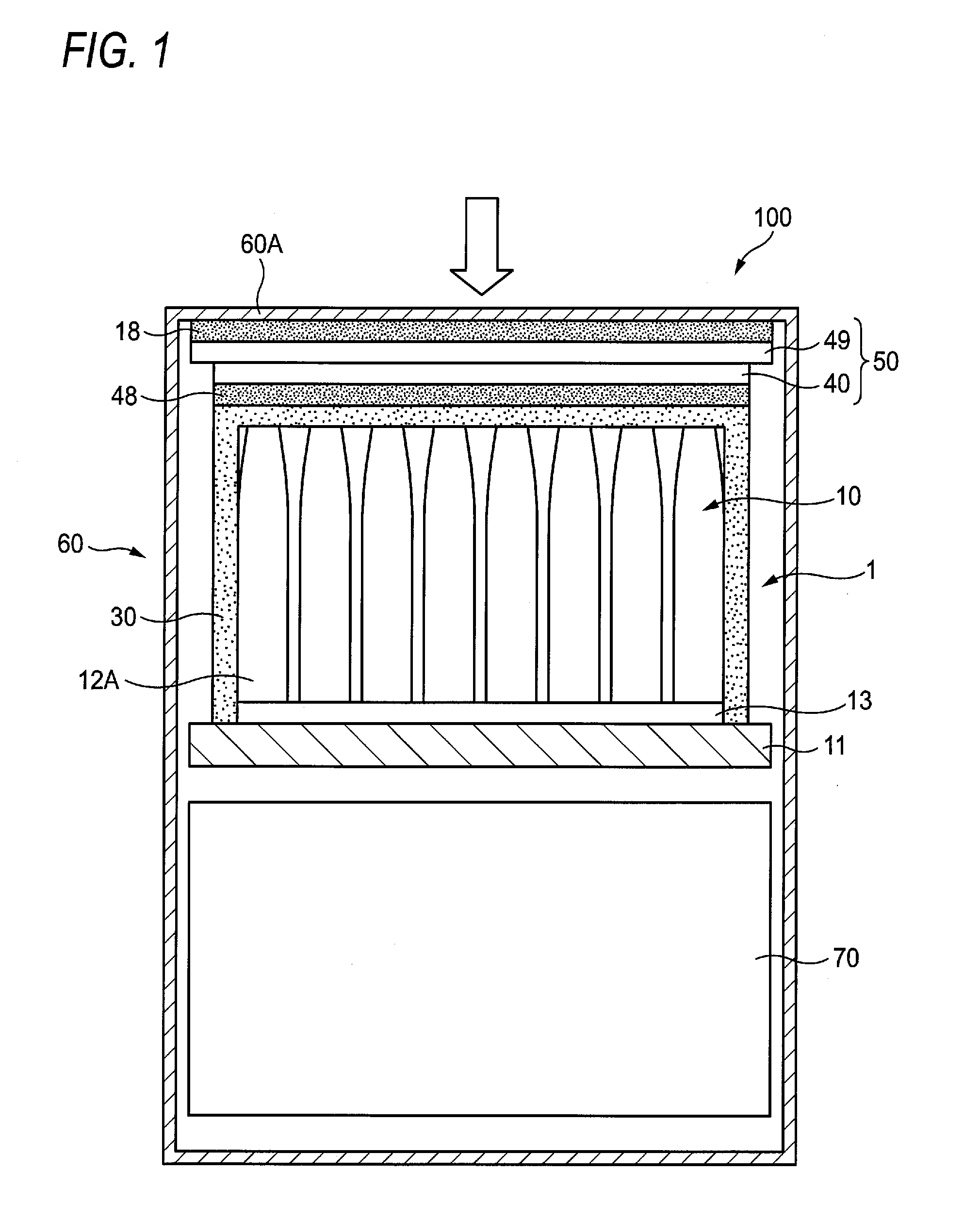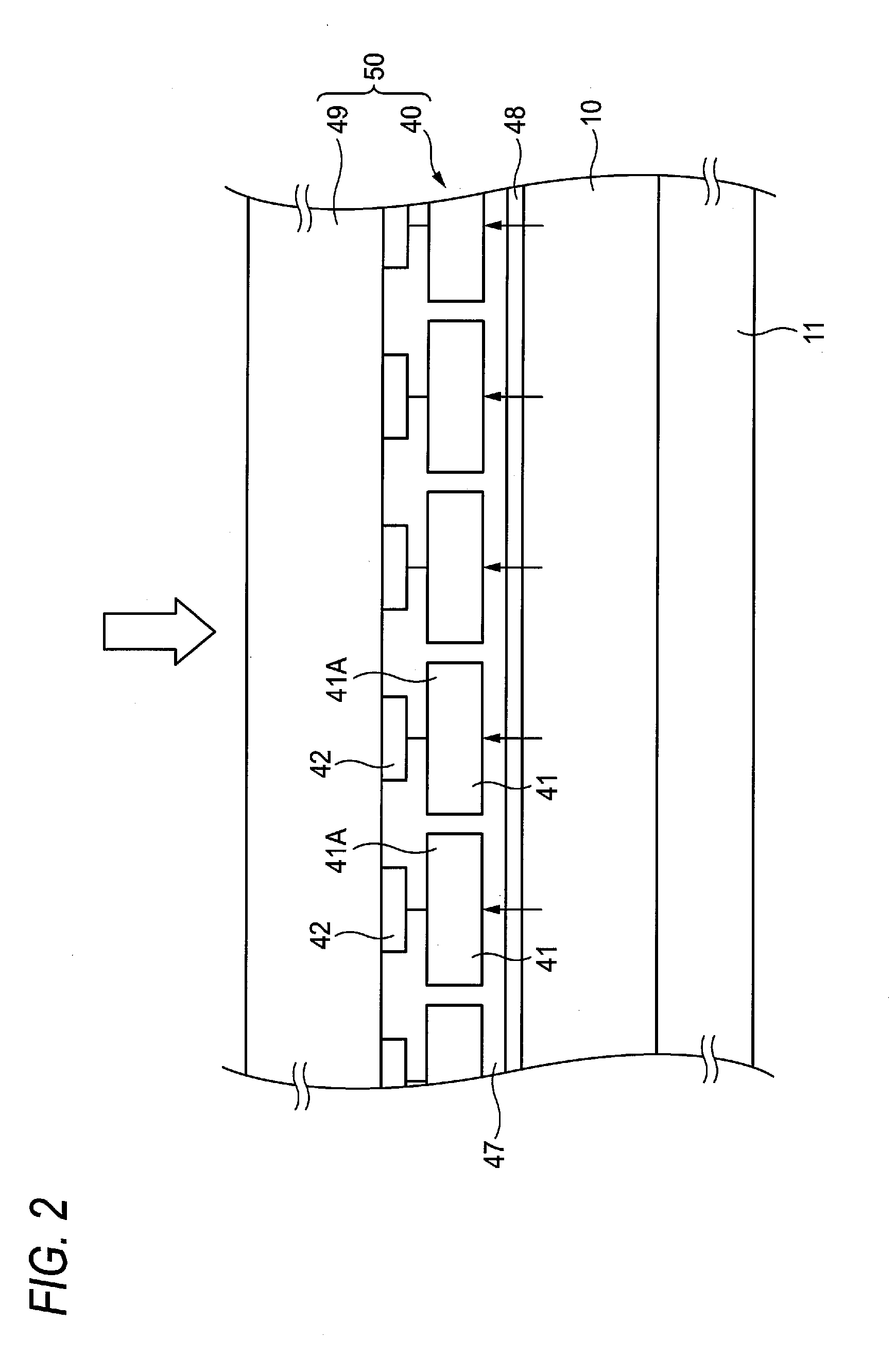Radiological image detection apparatus and method of manufacturing the same
a technology of radiological image and detection apparatus, which is applied in the direction of radiation intensity measurement, x/gamma/cosmic radiation measurement, instruments, etc., can solve the problem of reducing the quantity of x-ray entering the scintillator, deteriorating the performance of an element, and absorbing a large amount of x-ray, so as to maximize the image quality of the detected image and reduce the radiation absorption factor. , the effect of deterioration of the thin film
- Summary
- Abstract
- Description
- Claims
- Application Information
AI Technical Summary
Benefits of technology
Problems solved by technology
Method used
Image
Examples
example modification
6. EXAMPLE MODIFICATION
[0114]The configuration of the protective member provided in the photodetecting unit is not limited to that mentioned above. As shown in; for instance, FIG. 11, there can also be adopted a configuration including a base substance 49A (a resin layer) made of a resin and a light reflection film 49B (a light reflection layer) that is layered on an X-ray entrance side of the base substance 49A and that is made of aluminum or the like.
[0115]FIG. 12 shows an example modification of the X-ray image detection apparatus. In the example modification, after the process for peeling and removing a substrate, a protective film 35 is provided by use of; for instance, parylene, on side surfaces of the thin film portion 40, side surfaces of the protective member 49, and the peel surface of the protective member 49 facing the substrate 51. In addition to the protective film 30 provided on the scintillator 10, the thus-provided protective film 35 seals the scintillator 10 and th...
PUM
 Login to View More
Login to View More Abstract
Description
Claims
Application Information
 Login to View More
Login to View More - R&D
- Intellectual Property
- Life Sciences
- Materials
- Tech Scout
- Unparalleled Data Quality
- Higher Quality Content
- 60% Fewer Hallucinations
Browse by: Latest US Patents, China's latest patents, Technical Efficacy Thesaurus, Application Domain, Technology Topic, Popular Technical Reports.
© 2025 PatSnap. All rights reserved.Legal|Privacy policy|Modern Slavery Act Transparency Statement|Sitemap|About US| Contact US: help@patsnap.com



